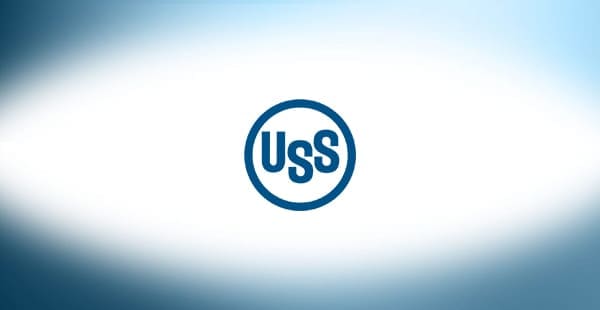01. History of Asbestos Use
United States Steel Corporation History of Asbestos Use
The United States Steel Corporation (U.S. Steel) was formed in 1901. It came from a merger of several steel companies, including:
- American Sheet Steel
- American Steel and Wire
- American Steel Hoop
- American Tinplate
- Carnegie Steel Company
- National Steel
- National Tube
Financier J.P. Morgan led the deal, which made U.S. Steel the first billion-dollar corporation in the world.
U.S. Steel played a major role in the industrialization of the United States. The company provided key materials for roads, buildings and cars. It also supplied the military during both World Wars.
During the company’s peak in the mid-1900s, U.S. Steel used asbestos widely in its facilities. Like many industrial businesses of its time, U.S. Steel relied on asbestos for its heat resistance. The material was used in insulation, machinery and protective gear for workers.
Asbestos exposure can cause serious health issues, including mesothelioma and lung cancer. U.S. Steel workers were exposed to asbestos without proper safety measures. This led to a wave of lawsuits in the late 20th and early 21st centuries, and people are still filing claims to this day.
For much of the 20th century, U.S. Steel was a leading force in global steel production. By the late 1900s, steel made up only a third of its overall business. The company branched out into other industries, such as:
- Chemicals
- Construction
- Gas and oil
- Mining
- Real estate
- Transportation, including railroads, shipping and shipbuilding
In 1986, the company formed a parent organization called USX Corporation to manage its different ventures. In 2002, U.S. Steel Group separated from USX and returned to being an independent company as United States Steel Corporation. The following year, it acquired the steel assets of National Steel Corporation.
At present, U.S. Steel is facing challenges in its operations. These include recent financial losses and confusion caused by failed buyouts, investor actions and asbestos litigation.
Resources for Mesothelioma Patients
02. Asbestos Products
United States Steel Corporation Asbestos Products
Many asbestos products were commonly found in steel mills, including at U.S. Steel. The following locations are known sites of asbestos exposure at U.S. Steel facilities:
- Clairton Coke Works in Clairton, Pennsylvania
- Clairton Mill in Clairton, Pennsylvania
- Duluth Works in Duluth, Minnesota
- Duquesne Works in Duquesne, Pennsylvania
- Ensley Works in Birmingham, Alabama
- Fairless Works in Fairless Hills, Pennsylvania
- Gary Works in Gary, Indiana
- Geneva Steel in Vineyard, Utah
- Granite City Steel Works in Granite City, Illinois
- Great Lakes Works in Ecorse, Michigan
- Homestead Steel Works in Homestead, Pennsylvania
- McDonald Works in McDonald, Ohio
- Worcester Works in Worcester, Massachusetts
The following asbestos products were commonly used in steel mills:
- Belts
- Boilers
- Building and construction materials
- Cables and wires
- Cement
- Cloths, fabrics and textiles
- Electrical wires
- Fireproof aprons, blankets, clothing and gloves
- Furnaces
- Gaskets
- Gauges
- Incinerators
- Insulation
- Ovens
- Paper
- Pipe insulation
- Pumps
- Refractory bricks
- Steam pipes
- Steel molds
- Valves
- Welding rods
03. Occupational Exposure
United States Steel Corporation and Occupational Exposure
The steel industry has historically used asbestos in many applications. U.S. Steel may have put employees at risk of occupational asbestos exposure in many ways.
For example, steel mills relied on asbestos because it is durable and resists heat well. These characteristics made it a dependable choice for use in boilers, insulation, ovens and protective gear.
The widespread use of asbestos at U.S. Steel exposed many employees to the harmful mineral. This includes exposure through protective gear and clothing made with asbestos that workers wore on the job. If the gear was damaged, workers could have been exposed to asbestos and later developed a disease caused by the exposure.
In 2016, the Occupational Safety and Health Administration (OSHA) fined U.S. Steel $170,000 for asbestos safety violations. The issues happened at the company’s Clairton Mill, located south of Pittsburgh along the Monongahela River.
Supervisors told employees to handle asbestos without using proper safety steps, which put them at risk of exposure. This was not the first time U.S. Steel faced penalties for asbestos problems. The company had been cited before in 2011.
04. Asbestos Lawsuits
Asbestos Lawsuits Against United States Steel Corporation
Some U.S. Steel workers were exposed to asbestos on the job and later developed mesothelioma, lung cancer or other related illnesses. As of December 31, 2024, the company was involved in about 990 active asbestos cases, with around 2,575 plaintiffs. Most of these cases include more than one defendant.
Several workers filed lawsuits against U.S. Steel and received settlements, including:
- $3,030,186 for a 70-year-old plant worker and Navy veteran
- $2,008,879 for a 76-year-old pipefitter
- $1,801,159 for a 93-year-old plant worker
- $1,586,267 for a 63-year-old plumber
U.S. Steel employees exposed to asbestos and later diagnosed with a related illness may be eligible to pursue compensation. Patients who worked at certain jobsites may also be able to file trust fund claims with other companies. A mesothelioma lawyer can file a claim and handle asbestos lawsuits.







